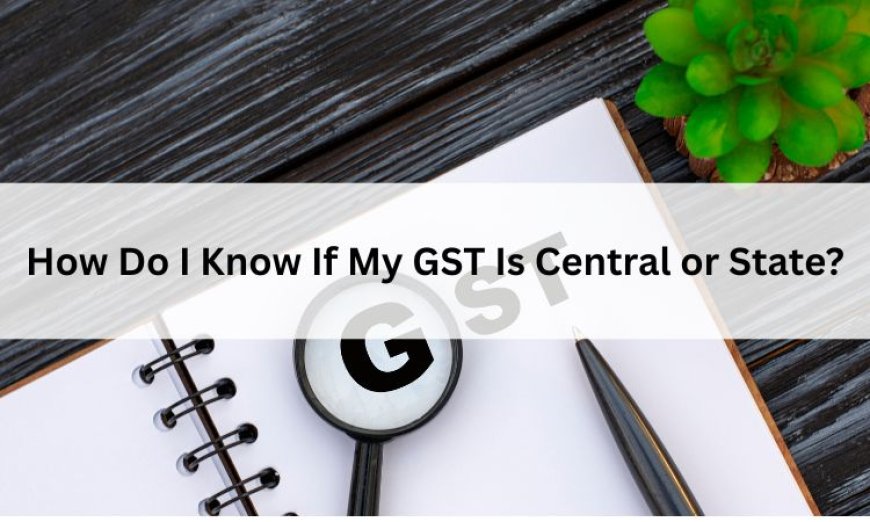How Do I Know If My GST Is Central or State?
Learn how to identify whether your GST is central or state-based using GSTIN, invoice, and transaction type. Understand CGST, SGST, and IGST easily.

In India, GST (Goods and Services Tax) is a comprehensive indirect tax that combines several state and central taxes into one system. But when it comes to actual GST payments or invoicing, many people often ask:
"Is my GST central or state-based?"
Lets break it down in a clear and easy-to-understand way.
Understanding the Structure of GST
GST in India has three main types:
-
CGST (Central GST) Collected by the Central Government
-
SGST (State GST) Collected by the State Government
-
IGST (Integrated GST) Collected by the Central Government on interstate transactions
Whenever you register for GST, you are given a 15-digit GSTIN (GST Identification Number) that includes your state code and PAN number, among other things. This number can help you know whether your GST is being applied at the state or central level.
How to Know If Your GST Is Central or State?
1. Check the Nature of Your Transaction
-
If you are selling within the same state (for example, from Delhi to Delhi), then:
-
You charge CGST + SGST
-
Half of the tax goes to the Central Government, and half to the State Government
-
If you are selling from one state to another (for example, from Delhi to Maharashtra), then:
-
You charge only IGST
-
The full tax is collected by the Central Government, which then shares it with the destination state
So, the nature of your transaction (intra-state or inter-state) decides whether GST is central or state.
2. Look at Your GST Invoice
Every invoice issued under GST will clearly mention which type of GST is being charged:
-
CGST + SGST ? Applicable for intra-state supply
-
IGST ? Applicable for inter-state supply
By checking your invoice, you can immediately tell whether your tax is central (IGST) or shared between the state and the center (CGST + SGST).
3. Check Your GSTIN for State Code
The first two digits of your GSTIN represent your state code. For example:
-
27 = Maharashtra
-
09 = Uttar Pradesh
-
07 = Delhi
If your suppliers and buyers GSTINs have the same first two digits, then the transaction is considered intra-state (CGST + SGST).
If they are different, the transaction is interstate (IGST).
4. Login to the GST Portal
You can also log in to the official GST Portal and view your return filings. It will show which tax types were charged during each transaction.
Why Its Important to Know the Difference
Understanding whether your GST is central or state-based helps you:
-
File correct GST returns (GSTR-1, 3B, etc.)
-
Avoid wrong tax collection
-
Maintain transparency in your accounts
-
Prevent legal issues or penalties
If you collect the wrong GST type (for example, charging CGST + SGST for an interstate supply), it can lead to mismatches in your returns and notices from the department.
Need Help?
If youre still unsure whether your transaction is central or state-based, or confused about how to manage invoices and returns, its always a smart idea to seek help from experts.
Platforms like Effizent Seele Pvt Ltd offer assistance through their GST Suvidha Kendras, where trained executives can guide you step-by-step. Whether its registration, return filing, correction, or understanding tax structure, theyve got you covered.
Final Thoughts
So to sum it up:
-
Your transaction type (intra or interstate) determines if the GST is central or state.
-
CGST + SGST applies within the same state.
-
IGST applies across different states.
-
Your GSTIN and invoice will indicate the type of GST involved.
With this basic understanding, you can handle your GST-related tasks more confidently and avoid common mistakes.






























